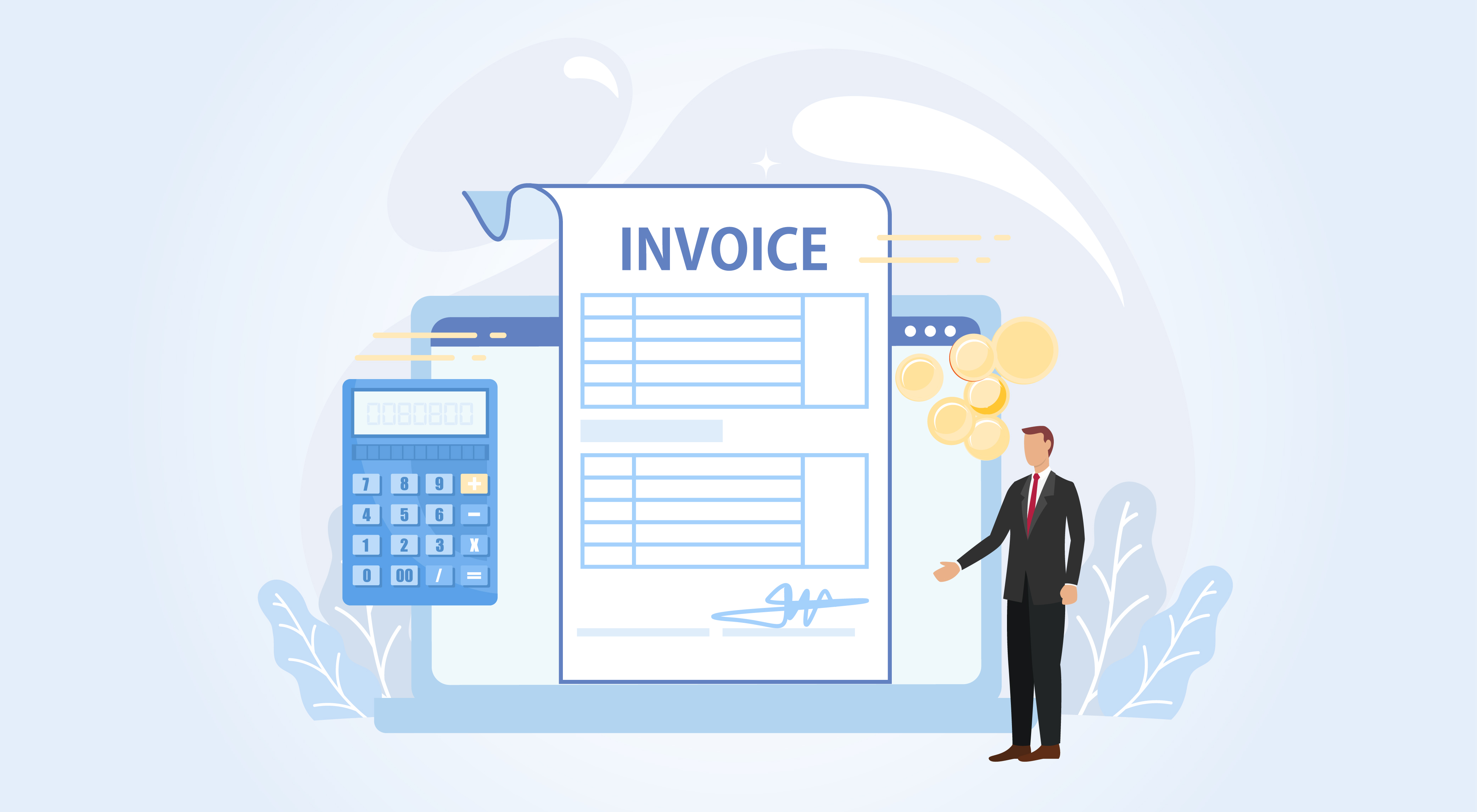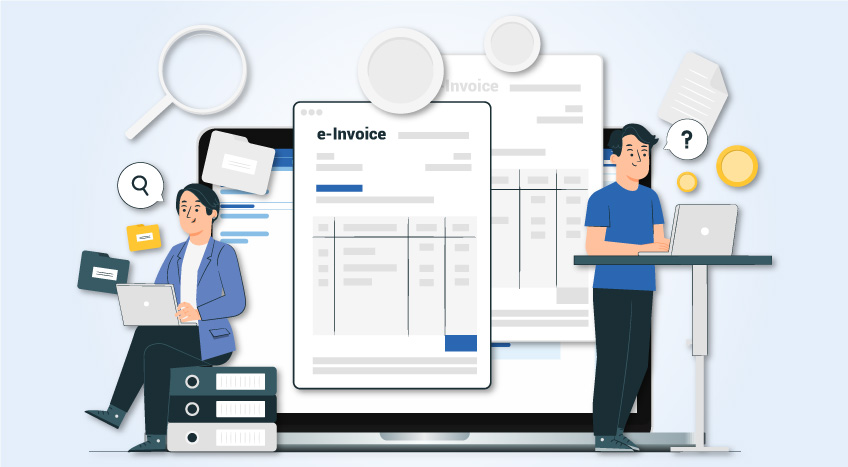- What is the 2nd phase of e-invoicing?
- What is integration?
- When will the integration phase of e-invoicing shall start?
- Who should e-invoice in the first wave of integration phase of e-invoicing in Saudi?
- How to comply with 2nd phase of e-invoicing requirements?
- Why connecting e-invoicing solutions to the internet is mandatory in the Integration Phase of e-invoicing?
- What are the acceptable formats of e-invoices?
- What components are in the QR code of e-invoices?
- What is Cryptographic Stamp?
- What is UUID?
- What are the main differences between tax invoices and simplified invoices in the 2nd phase of e-invoicing?
- How to generate and share simplified invoice in 2nd phase of e-invoicing?
- How to generate and share tax invoices in 2nd phase of e-invoicing?
- How can TallyPrime help
What is the 2nd phase of e-invoicing?
The integration phase, known as phase 2 of e-invoicing, is a system in which the business software, such as accounting software, EPR etc., used by the business, will be integrated with the ZATCA's system (Fatoora Portal).
In this system, once the supplier generates the invoice, the details will be electronically uploaded to the Fatoora portal, which will validate and authenticate the invoice. After successful authentication, each invoice is digitally signed and added with a QR code.
What is integration?
Integrating the taxpayer's e-invoicing solution such as accounting software with ZATCA's system (Fatoora portal) for the purpose of validating, clearing and stamping the invoice details.
|
The 2nd Phase- Integration phase of e-invoicing in Saudi Arabia |
When will the integration phase of e-invoicing shall start?
The Saudi Zakat, Tax and Customs Authority (ZATCA) announced that the integration phase of e-invoicing shall start from January 1, 2023. The first wave is applicable to businesses with revenue exceeding 3 billion from 1st January,2023. The second phase will apply to businesses with revenue exceeding 500 million in FY 2021 from 1st July,2023.
Who should e-invoice in the first wave of integration phase of e-invoicing in Saudi?
In the first wave, all KSA resident businesses with annual taxable revenue exceeding 3 billion should comply with the second phase of e-invoicing requirements starting from 1 January 2023. The annual taxable will be 2021 calendar year, and the last date for these businesses to comply with integration phase requirements is by 30th June,2023
How to comply with 2nd phase of e-invoicing requirements?
- Ensure the e-invoicing solution can connect to the internet
- Integrate the e-invoicing solution and devices with Fatoora Portal
- The solution is compliant; it can send the invoice details in XML format to the portal in real-time. Receive the stamped details from the portal and print details such as QR code on the invoice.
- Complies with guidelines to stamp the simplified invoices and report them to the portal within the prescribed timelines.
Why connecting e-invoicing solutions to the internet is mandatory in the Integration Phase of e-invoicing?
In the integrated phase of e-invoicing, the suppliers business software should be connected with the ZATCA' system (Fatoora Portal). This mandates a working internet connection.
What are the acceptable formats of e-invoices?
According to e-invoicing regulations in Saudi Arabia, your e-invoicing solution in the integration phase of e-invoicing must generate, share, and store e-invoices in specific formats of XML or PDF/A-3 with embedded XML. However, to share the invoice details to portal for clearance, it should be in XML format.
What components are in the QR code of e-invoices?
- Seller's name
- VAT registration number of the seller
- Date and time of invoice/note
- VAT amount
- Total amount (with VAT) of invoice/note
What is Cryptographic Stamp?
The Cryptographic Stamp is automatically generated by the solutions (for simplified invoices), or by the ZATCA system (for tax invoices) and is not visible on the printed invoice apart from an embedded version in the QR code.
What is UUID?
It stands for Universally Unique Identifier, used to identify an invoice through a globally unique number. Once it is issued and can be tracked throughout its lifecycle. A UUID is an automatically generated number that is generated within the taxpayer's solution that is not visible on the printed invoice. Compliant e-invoice solution vendors must ensure that their solutions are able to generate UUIDs and that they are present within the electronic invoice XML.
What are the main differences between tax invoices and simplified invoices in the 2nd phase of e-invoicing?
|
|
Electronic Invoice (B2B: business to business invoice) |
Simplified Electronic Invoices (B2C: business to consumer invoice) |
|
QR code |
Generated by the taxpayer's solutions and the e-Invoicing portal will update the code during the clearance process. |
QR code mandated is generated by the software used by the businesses |
|
Cryptographic stamp |
Cryptographic stamps are applied by the Authority E-Invoicing Integration Portal. |
The software does cryptographic stamp |
|
Invoice Sharing with Portal |
Sharing of invoices with the e-invoicing Integration portal in real-time |
Sharing invoices within 24 hours from generating. |
|
Clearance VS reporting |
The supplier should send the invoice details to portal for clearance purpose before issuing the invoice to the buyer. |
There is no clearance. It's just the reporting of simplified invoice details after issuing the invoice to the buyer |
How to generate and share simplified invoice in 2nd phase of e-invoicing?
- The seller generates the e-invoice which includes all the mandatory fields
- The seller shares the e-invoice with the consumer
- The seller stores the e-invoice on a compatible e-invoicing solution
- The seller reports the e-invoice to ZATCA within a maximum duration of 24 hours through an integrated e-invoicing solution with Fatoora Portal
How to generate and share tax invoices in 2nd phase of e-invoicing?
- The seller generates the e-invoice, which includes all the mandatory fields
- The seller shares the e-invoice with ZATCA through their integrated e-invoicing solution, and then it gets cleared from ZATCA and sent back to the taxpayer after the clearance
- The seller shares the cleared e-invoice with a QR code with the buyer
- The seller stores the e-invoice electronically
How can TallyPrime help?
With the experience of 30+ years in the GCC market, TallyPrime, a complete business management solution is accredited by Zakat and Tax authority ZATCA as a compliant e-Invoicing (FATOORA) software.
TallyPrime helps your business generate and manage e-invoicing with ease and takes care of every little detail while offering you a full financial management solution to bring you the most delightful experience. Below are some of the key features of TallyPrime:
- TallyPrime is designed to archive the invoice details in XML format as per ZATCA requirements
- Generate e-invoice for tax invoices and simplified invoices in a single click
- Supports e-invoices for a tax invoice, simplified invoice, debit notes, and credit notes
- Print QR codes on simplified invoices effortlessly
- Accurate VAT returns filing
- An exclusive e-invoice report will give you a view of all e-invoicing tasks, activities, and complete history of transactions
- Security control and User login management
- Log details indicating the entire history of the masters & transactions
Read More:









